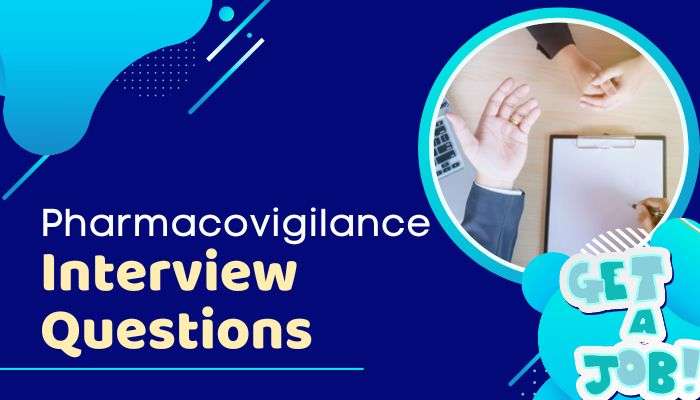The Ultimate Guide to Understanding Pharmacovigilance: Safeguarding Patient Safety
The Ultimate Guide to Understanding Pharmacovigilance: Keeping Patients Safe
Introduction
Pharmacovigilance Foundations is here to help healthcare professionals learn more about the important field of pharmacovigilance. Since keeping patients safe is super important, knowing how to monitor drug safety is a must. This guide will show why pharmacovigilance matters, how it works, and how healthcare workers can use it every day to make healthcare safer.
What is Pharmacovigilance?
Pharmacovigilance is a special area in healthcare that looks out for bad effects or problems with medicines. The word comes from “pharmakon” (Greek for drug) and “vigilare” (Latin for to keep watch). Pharmacovigilance helps make sure medicines are safe. It does these things:
1. Finds new info about medicine risks.
2. Watches for changes in how safe and helpful drugs are.
3. Prevents harm to patients by making drugs safer.
History of Pharmacovigilance
Pharmacovigilance started with early drug safety rules, which were more about fixing problems than stopping them before they happened. The thalidomide tragedy in the 1960s showed the need for better systems. Over time, worldwide systems have been made:
1. Strict processes for approving drugs.
2. Systems for reporting adverse drug reactions (ADRs).
3. Building networks for sharing drug safety data internationally.
The Pharmacovigilance Process
Pharmacovigilance has several key steps:
Detection
This part is about spotting signs or issues with drugs. Signals can mean new bad effects are found through reports and studies.
Assessment
Next, we look at if the drug caused these effects. This means checking data from trials, studies, and reports to figure things out.
Management
If a bad effect is confirmed, steps are taken to fix it or stop it. This might mean changing how much to take or even stopping the drug from being sold.
Communication
Sharing what we find with authorities and the public is important. Everyone needs to know about risks and safety steps.
Important Words in Pharmacovigilance
If you want to know about pharmacovigilance, it helps to know these words:
1. Adverse Drug Reaction (ADR): A reaction to a medicine that is harmful or unwanted.
2. Signal Detection: Finding new risks with drugs.
3. Causality Assessment: Figuring out if the drug caused the bad effect.
4. Risk Management Plan (RMP): A plan to find, assess, and lower drug risks.
5. Spontaneous Reporting System: A way for healthcare workers or patients to report drug reactions.
People Involved in Pharmacovigilance
It takes teamwork to do pharmacovigilance well:
1. Regulatory Authorities: Groups like the FDA and EMA oversee drug safety.
2. Pharmaceutical Companies: They must watch their drug’s safety.
3. Healthcare Professionals: Doctors, nurses, and pharmacists report ADRs.
4. Patients and the Community: Patients’ experiences help find new reactions.
5. Pharmacovigilance Centers and Committees: These groups collect and analyze data.
Methods and Tools in Pharmacovigilance
These tools help with pharmacovigilance:
Spontaneous Reporting
This is a system where professionals and patients volunteer to report drug reactions. It’s important for starting the process of signal detection.
Cohort Studies
These studies watch a group over time to see how safe and effective drugs are.
Case-Control Studies
By comparing patients with certain conditions to those without, we can find possible drug risk factors.
Data Mining
Advanced tools help sift through lots of data to find patterns and potential issues.
Electronic Health Records (EHRs)
New tech helps collect data in real-time, aiding quick pharmacovigilance actions.
Challenges in Pharmacovigilance
Pharmacovigilance isn’t perfect, with some challenges:
1. Not everyone reports bad effects, hiding some risks.
2. Keeping data quality consistent is hard.
3. It’s tough to align standards globally.
4. Developing countries might not have enough resources.
5. Using tech while keeping data safe takes balance.
Pharmacovigilance and Technology
Tech has changed pharmacovigilance:
Artificial Intelligence and Machine Learning
These help automate finding signals and patterns.
Social Media and Digital Platforms
People’s posts online give valuable real-time drug reaction info.
Big Data Analytics
Looking at big datasets helps understand drug safety better.
International Collaboration and Regulations
Working together globally improves efforts:
1. The World Health Organization (WHO) leads international pharmacovigilance.
2. Groups like the International Council for Harmonisation (ICH) help align practices.
3. Agencies like the FDA, EMA, and CDSCO set tough safety rules.
Case Studies: Important Events
Learning from the past shows why pharmacovigilance is crucial:
1. Thalidomide Tragedy: Led to modern pharmacovigilance.
2. Rofecoxib (Vioxx) Withdrawal: Made drug safety checks stricter.
3. COVID-19 Vaccine Rollout: Showed how important it is to track vaccine safety worldwide.
The Future of Pharmacovigilance
Future trends will shape pharmacovigilance:
1. Personalized medicine offers specific treatment and monitoring plans.
2. Real-world evidence (RWE) is key for understanding drug safety in practice.
3. Advances in tech will improve data collection, analysis, and reporting.
Conclusion
Pharmacovigilance is critical for patient safety and using medicines correctly. By learning and using these practices, healthcare workers can help protect public health. Join Pharmacovigilance Foundations in focusing on drug safety and using these principles daily for a better healthcare future.





